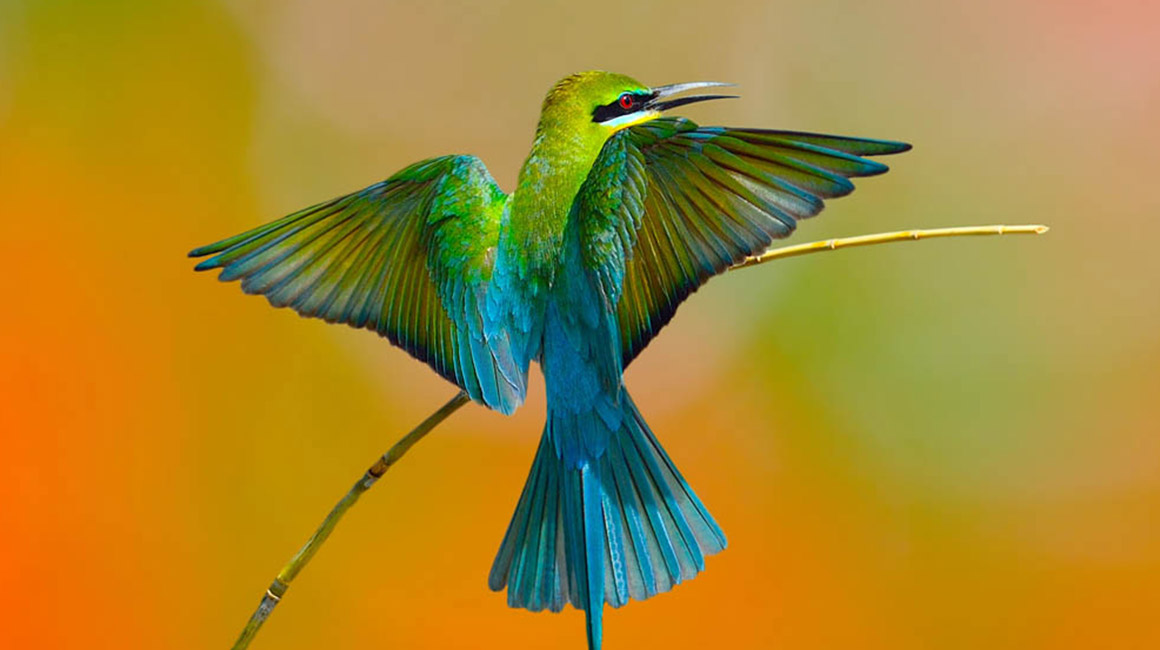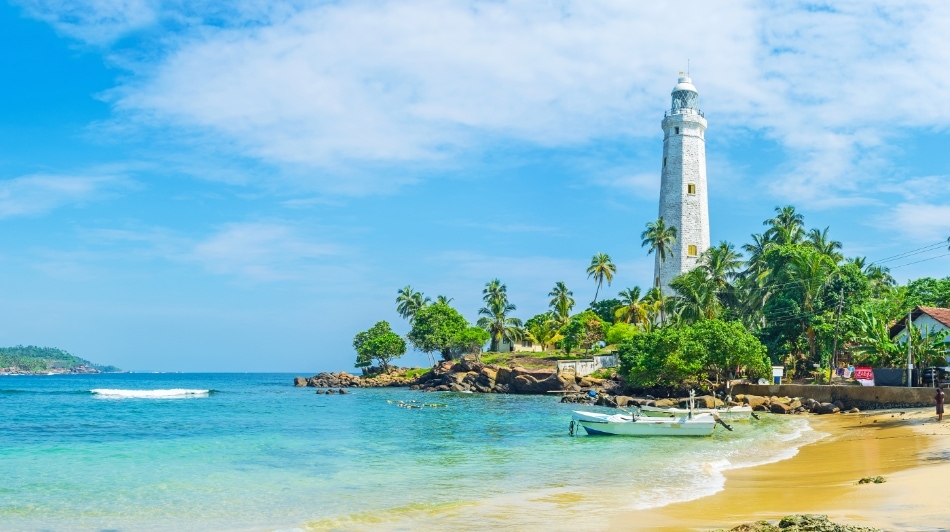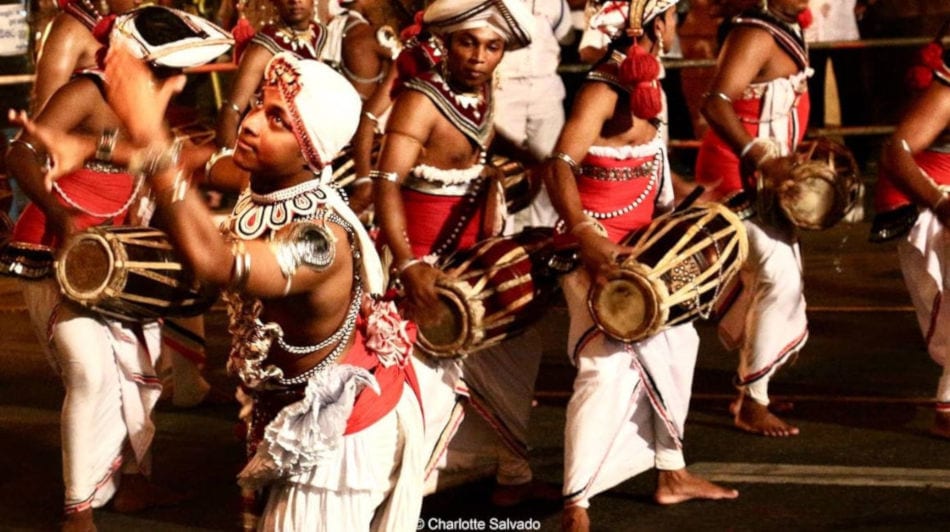Migratory Birds of Sri Lanka – The Ultimate Home of Aviators

Birds with their colourful plumage and unparalleled ability to fly, always attract the attention of one and all. Whether you are a keen bird watcher or not, you can’t help but notice how these creatures are so similar yet so different physiologically and behaviourally. It is indeed a marvel of mother nature.
Among these delightful creatures are the ones who fly to different destinations to spend different seasons of the year. Birds with such behavioural patterns are known as migratory birds.
Migratory birds are birds that travel long distances from Winter grounds to Breeding grounds at regular time intervals. This is a natural phenomenon which occurs due to their inability to survive the Winter periods in a given habitat due to the extreme weather conditions and lack of food. Avoiding the onslaught of predators, avoiding spreading of diseases and breeding can be given as other reasons as to why birds migrate. As a result, migratory birds travel long distances in search of the best ecological conditions and favourable habitats.
Being a tropical island, abundant with food makes Sri Lanka a favourable destination for migratory birds throughout the year. The favourable temperate climate and the abundance of wild habitats make Sri Lanka an ideal destination for migratory birds.
Among the numerous bird species that have been recorded in Sri Lanka, 10 migratory birds are documented here.
Greater Flamingo – Phoenicopterus roseus
Greater Flamingo is the largest of all the species in the Flamingo family. The adult male weighs about 3.6 kg and is around 1.5 m in height. These pinkish coloured birds can be observed in flocks of hundreds and sometimes thousands in Jaffna, Mannar and Bundala salterns areas of Sri Lanka from August to April. Bundala National Park is famous among the bird watchers for its large Flamingo population during the Winter season.
They feed mainly on herbs, vegetables and small aquatic animals. During Winter, Greater Flamingos in Asia migrate to warmer climates. Increase of Global Warming has shortened their migrating patterns drastically as they don’t migrate if the season is mild.
Garganey – Anas querquedula
Garganey is the most abundant of the migratory ducks in Sri Lanka. The adult male weighs about 0.4 kg and is around 40 cm in height. These blackish brown ducks are very commonly observed during the cold periods (Winter) in coastal lagoons, large tanks and marshes of dry lowlands. Sightings of these birds have been recorded from Yala and Wilpattu National Parks. They feed mainly on grain (rice), insects, crustaceans and mollusks.
During day time they float on water far away from the shore in close flocks while they feed during the night. Habitat loss form wetland drainage, climatic change and human disturbance due to overharvesting from hunting and lead poisoning are some of the threats they face leading to record population decline.
Western Reef Egret / Western Reef Heron – Egretta gularis
A regular Winter migrant to the island, this species is of 2 former subspecies of the Little Egret and is now treated as a single species. The adult male is around 65 cm in length. They are most commonly sighted int the coastal lagoons, mangroves, estuaries and shores mainly in North. They are usually spotted from April to August and at the end of May in Chilaw.
They eat fish, crustaceans, and mollusks. In coastal areas, they regularly feed on mudskippers. The species occur in several plumage forms, dark morph with dark ashy grey plumage, pale morph with pure white plumage and white plumage with grey patches. They live individually or as pairs.
Pacific Golden Plover – Pluvialis fulva
A common Winter visitor to the island, it is commonly sighted in the dry zone of the island. The adult male weighs about 0.15 kg and is around 30 cm in length. Fulva in Latin refers to a Tawny colour while the bird is black with a dark rump. Females are duller in colour. They are most commonly sighted in lowland lagoons, marshes, grasslands adjoining large water bodies, mudflats, dry paddy fields, etc. They mainly feed on insects (grass hoppers, beetles), crustaceans and worms. They are found in small to large flocks.
Although they aren’t threatened at present, commercialized exploitation and habitat loss are two main problems faced by these species.
Pin-tailed Snipe – Gallinago stenura
Commonly sighted in the island during Winter, the adult male weighs about 0.12 kg and is around 30 cm in length. These species are sighted in the weedy swamps, wet grasslands and paddy fields throughout the island though the sightings are much common in the lowlands. During most of its stay in Sri Lanka it acts as a nocturnal bird even though it feeds until late hours of the morning and again in the afternoon. Bundala National Park is famous for its sightings of Pin-tailed Snipe. They mainly feed on insects, their larvae and earthworms.
It has a beautifully mottled black, brown and reddish-brown plumage, providing the bird with superb camouflage. It has a wide range, but it’s vulnerable to changes in the habitat and with threats of being hunted. But it is not globally threatened at present.
Black-tailed Godwit – Limosa limosa
Commonly sighted in the coastal areas of the dry zone and also in inland water bodies including marshes, coastal mudflats, lagoons, paddy fields and tanks during the Winter season. They linger singly or as small to large flocks. They are a common Winter visitor to Mullaitivu lagoon since 1900s.
The adult male weighs about 0.3 kg and is around 40 cm in length. It has three subspecies. It is adorned with an orange head, a grey-brown body and black and white wings. They are listed as Near Threatened in the IUCN Red list and face threats due to loss of habitat from wetland drainage and agricultural abandonment.
Common Redshank – Tringa totanus
Commonly sighted in Kalpitiya, Bundala saltern and the other dry coastal areas of the island during Winter, it is almost entirely black during the breeding times and is very pale during the Winter. It is not as common in the wet zone and feeds on crabs, mollusks, worms and other aquatic animals in shallow water in mudflats, salt marshes, coasts, lagoons, etc. The adult male weighs about 0.15 kg and is around 30 cm in length. They linger in small groups and sometimes with other waders.
Brown-headed Gull – Larus brunnicephalus
Arguably the most commonly sighted gull in the island, it is abundant in the Northern coastal lagoons during Winter. With its dark-tipped red bill and black wing tips, it’s easily distinguishable form other gulls. These creatures are sometimes spotted during Summer and rarely in the coastal South-Eastern parts of the country during Winter. It is very sociable and flocks can be seen resting on the water close to beach.
It will scavenge towns and ships for easy food or feed on invertebrates in ploughed fields with equal relish. The population is of brown-headed Gull is considered stable and is rated at Least Concern in the IUCN Red List.
Blue-tailed bee-eater – Merpos philippinus
Even though breeding of Blue-tailed bee-eater in Sri Lanka is rarely reported, it is very commonly sighted throughout the island during most of the year. Arriving in August it spreads throughout avoiding deep forests, until May next year. They feed on flying insects such as bees, wasps dragonflies and butterflies sallying out from top of trees. They linger as flocks of few birds usually less than ten. It frequently bathes in rivers and tanks plunging into the water while on the wings.
It’s a richly coloured, slender bird with a predominantly green plumage. Its face has a narrow blue patch with a black eye stripe, and a yellow and brown throat; the tail is blue and the beak is black.
Indian Pitta – Pitta brachyura
They are small to medium-sized birds with large heads, stout medium-length beaks, round wings, very short tails and strong long legs. All pittas have bright, colourful plumages. They are a common migrant encountered throughout the island mainly in the Western and Southern coastal lines but they don’t inhabit hills. These birds normally linger individually and upon arrival each bird demarcates its own territory and remain there for rest of its stay while not letting other Pittas to intrude it. It often feeds on insects, snails, small snails, etc.
Talk to us at https://www.steuartholidays.com/contact-us/ to add birdwatching to the list of things to do on your next visit to Sri Lanka.



